Feeding chickens raises more questions than almost any other aspect of homesteading. From the nutritional needs of chicks to the dietary needs of free-ranging flocks, our guide dives deep into everything you need to know for happy, healthy flocks. Join me as we explore practical feeding guidelines, natural supplements, and old-timey wisdom, ensuring your chickens receive the best care possible. Get ready to enrich your poultry-keeping knowledge with our complete guide to feeding chickens.

This post was originally shared in August 2016. I’ve updated it today to share new pictures and answer questions from readers I’ve received over the years.
In This Post
Feeding Chickens: Generations of Knowledge
When you’re born and raised on a farm, understanding the needs of chickens becomes second nature. However, the array of information available can be daunting for those new to chicken keeping. Here at The Farmer’s Lamp, we aim to simplify this overwhelming sea of advice. Let’s talk about the most common questions we receive about feeding chickens and help alleviate any concerns you may have.
As my Papa often said, ‘There’s as many ways of getting a farm job done as there are farmers. You’ve got to be willing to listen, help, and learn from them, even if it’s just to see what not to do.’ This philosophy guides us in fostering a community of learning and mutual support.
With a family legacy of chicken keeping that spans at least seven generations and over 45 years of personal experience, I’ve made my share of mistakes and discoveries. I found success when I returned to the basic principles my grandmother taught me.
Watch the Video For This Post
A Funny Childhood Experience About Feeding Chickens
As a girl, one of my favorite jobs was caring for the chickens and gathering eggs. I was about 8 or 9 when I experienced a day I will never forget.
Granny’s feed barrel was covered by a board weighed down with scrap iron to keep the critters out. It was the responsibility of whoever was last in the barrel to ensure it was replaced correctly.
I didn’t do my job well because when I lifted the lid to get the feed (I shudder while recalling), “bam” up the sleeve of my flannel shirt ran a mouse! I ran towards the house screaming while clutching my arm. Granny thought something was killing me because of my screaming and came running.
Once I was able to blubber out what had happened, she told me to let go of my arm. It took some convincing with a serious “you better mind me” voice before I finally let go, and out fell the mouse…dead! I had squeezed it to death. This is why mice and I are sworn enemies!
She told me to get the chickens tended to while making sure I understood to put the lid back on the barrel properly. She was laughing as she went back to getting breakfast. This childhood mishap reinforced the importance of attention to detail and helped shape my vigilant approach to chicken keeping later in life.
Nutritional Needs of Chickens
- Laying Hens: Need a minimum protein of 16% and a maximum of 18%; minimum calcium of 3% and a maximum of 5%. All the other minerals are pretty standard in feeds: phosphorous, salt, fats, etc.
- Broilers (birds grown just for meat): Need a minimum protein of 18% and a maximum of 20%; minimum calcium of 0.90% and a maximum of 1.5%. The other various minerals are pretty standard.
- Chicks: Because of their rapid growth, they require a minimum protein of 18% and a maximum of 21%; minimum calcium of 1% and a maximum of 1.45%.
Scratch feeds, while lacking in protein and fat, are used by some chicken keepers as a supplement to a balanced diet. However, you can also successfully feed chickens without relying on commercial feed.
We choose not to feed our flock pellets or crumbles at our farm. We believe they are not natural to the digestive system of birds and can cause problems. We feed our flocks like our grandparents did, with a little cracked corn in the morning and evening, free-ranging, and access to nutrition resources like garden scraps and compost piles. This method works for us, recognizing that every keeper has a unique approach to feeding chickens.
Listen to the TFL Podcast, “What You Should Not Feed Your Chickens”
Feeding Guidelines
There are standard guidelines for feeding your flock. However, you will establish your own system according to your personal experience, preferences, and the needs of your flocks.
- Hatch – 8 weeks feed chick starter. Our hens have a breeding yard in which they hatch out. Because of the confinement, I feed her with a quality organic layer, garden scraps, etc. She cracks the layer up for her chicks and teaches them how to eat.
- 8 – 20 weeks change feed to grower – especially if you are raising dual purpose or meat birds.
- 20 weeks+ feed layer to your flock
- If your flock is of mixed age, feed the whole flock grower until the youngest birds reach 20 weeks of age.
- If this is the case, be sure to offer your hens a free choice of calcium. The chicks won’t eat it, and your hens will get what they need. We use their eggshells to provide calcium, but you can use oyster shells if you prefer.
Feeders vs. Scattering
Before settling on our current feeding method without store-bought feed, we experimented with several types of feeders. Initially, we tried a plastic ground feeder, which was supposed to be waterproof. Unfortunately, moisture still got in, causing the grain to mold and sour. We also tested steel feeders that hang from the ceiling and release feed into a tray below. Although this setup reduced waste compared to the plastic feeder, there was still waste.
If you’re like me, you hate waste of any kind. One day, I was thinking about it and said, “Ya know, Granny never used a feeder, and it worked for her. Why wouldn’t it work for me?” So I called her to talk it over (boy, I would love to still be able to do this) and I decided to experiment to find what my chickens preferred.
I set out the plastic and metal feeders and scattered feed directly on the ground. The result was clear: my chickens were happiest and most engaged when scratching and pecking for their food on the ground, largely ignoring the feeders unless there was no other option. This method, echoing Granny’s, has proven effective and satisfying for us.
How Much Feed Do Chickens Need?
To decide how much feed their flock needed, the old-timers scattered grain and saw how much the flock could clean up in 30 minutes. They then fed the flock what they ate in that amount of time once a day.
Most of them fed their flocks in the coop or yard every evening when they came up for the night. This gave them the chance to see the flock and gave the flock an incentive to come on in.
If you prefer a measurement, I have that for you.
- A chicken eats 1/4 cup to 1/3 cup of feed each day. That’s 2 to 3 oz per bird.
- If you free range your flock, you can feed half this amount in the evenings to teach them to come in for the day.
I’ve trained my chickens to come to a white bucket, a method I started when they were chicks. By using the same bucket each time I went out to feed them, they’ve learned to associate it with mealtime. Now, whether I’m carrying kitchen scraps or heading to the compost pile, they’ll run in from the woods or wherever they are when they hear me and see the white bucket, no matter what time of day.
This routine makes daily checks and securing the flock at night easier. It’s a simple, effective way to ensure all chickens are accounted for each evening
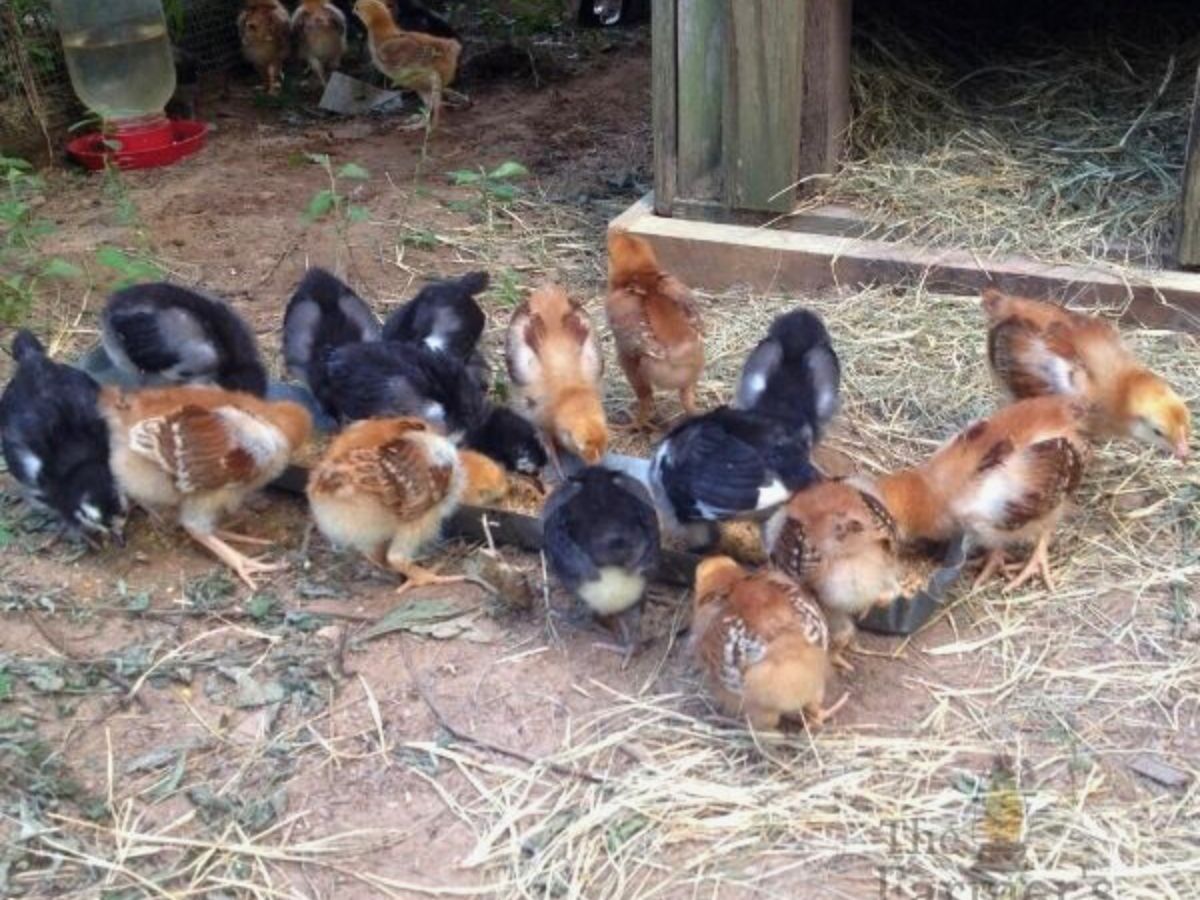
How Much Feed Do Chicks Need?
Of course, chicks eat considerably less than older chickens.
- They need 1/8 cup or 1 oz per chick a day.
- Keep food constantly available for chicks during the first 4 weeks.
- From then on, feed them twice a day. For the second feeding of the day, I take them garden or kitchen produce.
- When they’re 8 weeks old, I begin to feed them adult portions of grower and garden/kitchen produce.
- At this age, I’m fattening up the ones who will be processed for food and making certain the ones who will be introduced into the flock as layers are a good size and in good health.
- Once they leave their grow-out pen and join the main flock, they don’t get feed at our farm.
How The Old Timers Fed Chickens
Believe it or not, providing your flock with any grain at all is unnecessary—if you free-range your flock and they have access to the right resources.
For thousands of years, chicken keepers have managed without grain. In many countries, there are flocks of feral chickens that no one feeds. Some old-timers made their own feed, and today, there’s a movement towards eliminating all grain feeding from flocks. When my husband was in India, he sent me pictures of chickens in all sorts of unusual places, but no one was feeding them.
The old-timers also bartered with neighbors for grains and gave their flocks kitchen and garden scraps, along with allowing them to free-range. Remember, chickens aren’t herbivores—they’re omnivores. My flock loves mice, worms, and all manner of insects.
If the old-timers used grains, it was usually just a small amount of cracked corn in the evenings to call them in. Most of them were free-ranged, like my grandparents’ chickens. It always amused me to see the chickens running down the dirt road from their foraging when it was time to get their evening corn.
In Laura Ingalls Wilder’s “Little House on the Prairie” series, Mrs. Boast gave Ma a hatching of chicks, and they fed them some cracked corn. They lived in a time when farmers grew their own animal feed and free-ranged most of their livestock. This is our goal for our homestead and livestock.
The availability of commercial feeds has made it easier for people in all kinds of places to keep backyard chickens. For hobby farmers or those in urban settings, there isn’t room to grow their own food or to free-range the flock. In some places, it’s even against the law to free-range any type of livestock.
Even for those who do free-range, supplementing your flock’s diet with a well-balanced feed isn’t a bad idea. It can make winter and times of stress a little easier on your birds.
How Do I Know They’re Getting Enough to Eat?
It’s kind of odd to me how my chickens always seem hungry. They may have just been fed or have been out free-ranging, but they act like they’re starving! They run as fast as their little legs will let them and cluck as loudly as if they hadn’t eaten anything all day long.
The best way to tell if you’re feeding them enough is to look at their overall health. If your hens are regularly laying healthy eggs, they’re doing well. A healthy egg has a well-formed shell with a nice shape and color. You may get some abnormal eggs every now and then, but generally, their eggs will be healthy. Our companion article on egg laying and egg abnormalities will help you further with this.
When a chicken is healthy, it’s inquisitive, lively, and has nice red combs and wattles. The exception to this is when they are molting or not yet laying; they will have dull pinkish combs and wattles during these times. They will have healthy feathers, beaks, legs, and feet. A good check is to see if they’re about the average size for their breed.
You can pick them up if they are used to being handled, or you can wait until they go to roost and then pick them up to check. You can tell if they’re plump or frail. If you follow the feeding guidelines above, you shouldn’t have any problems, but it’s always good to check them for your peace of mind.
The more you know your birds, the easier it becomes to spot a problem quickly just by watching them. When Fat Hen had her run-in with a hawk earlier this year, I knew something was wrong with her by the way she walked. She had developed an abscess. We noticed she was acting differently and were able to take quick action. Her wound healed well, and she’s laying again.
You can learn how to recognize the signs of common illnesses in backyard flocks in our companion article.

How to Train Chickens to Come In From Free Ranging
I train my flock to come to me with a white bucket. When they’re chicks, I bring their food in a white bucket. Anything I take to the chicken yard is carried in that white bucket. They quickly associate the bucket with goodies, and by the time they’re 3 weeks old, they come running to me whenever they see it!
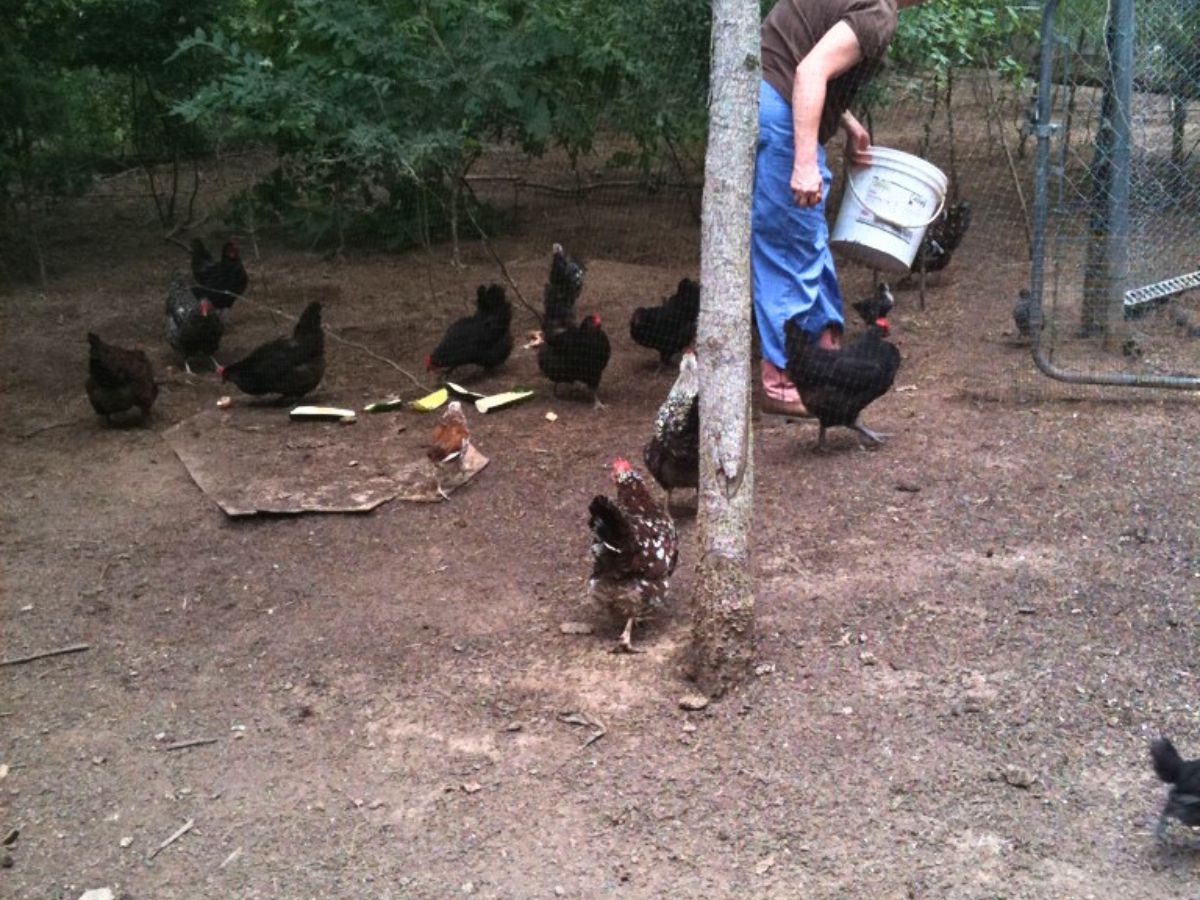
Should I Offer My Flock Supplements?
This is a very controversial subject and one you’ll have to decide for yourself.
As for us, we don’t “supplement” our chickens’ diet with commercially produced nutritional aids. Many products are advertised as “must-haves,” which is a red flag for me to avoid them.
Commonly pushed products include electrolyte powders, vitamin and mineral compounds, performance enhancers (yes, who knew?), chemical wormers, vaccines—the list goes on.
I’ve never found the need for any of them and am generally against their use. Chickens have survived without our “help” through chemical supplements for thousands of years. We strive to live as naturally as possible, and we want the same for our animals. After all, “We are what our animals eat.”
We do a few things for our chickens through natural supplementation.
1. Free Ranging
This isn’t technically a supplement. It’s a way of allowing the chicken flock to feed itself. They will find what they need, as God gives them it as instinct. There are pros and cons to free-ranging your flock, and you can learn about them in our companion article. If you’re unable to free-range your birds, you can still offer them natural supplements, like greens and worms.
Consider keeping some form of litter in their yard to scratch through. We like to put a round bale of hay in the yard ever so often. The decaying litter will attract critters they like to eat. You can also place logs, planks, or other pieces of wood in their yard. Let the wood sit for a while, then move it.
You won’t believe the different critters that will be living under there, and your chickens will chase, scratch, and gobble them up. That’s actually how I discovered chickens like mice. I turned over one of the logs my husband had put in the yard for me, and there were all kinds of baby mice. They went wild, gobbling up those little varmints!
2. Crushed Eggshells
We offer our flocks their own eggshells for calcium. Calcium deficiency is hard on a hen as she uses calcium in making eggshells. A deficiency will cause the eggshells to become thinner and decrease the number of eggs she lays.
- I rinse our egg shells as I use them and let them air dry before adding them to the one-gallon white bucket I keep them in until I’m ready to use them.
- When the bucket is full or the girls need some, I bake them at 250 degrees for about 15 minutes. You’ll know they are ready when they look very dry and start darkening inside the shell.
- Some people don’t bake them and seem to have no problems, but since they have been sitting in a bucket for a while, I bake them just in case something creepy has decided to live there.
- After they bake, let them cool for a few minutes, then crush them into chicken bite-size (very small) pieces. Once they’re heated, they break easily like glass.
- I store them in glass jars in my pantry until the girls are ready for them.
A Word of Caution in Feeding Eggshells
Another reason I bake them and make sure the bites are so small is because I don’t want the hens to associate the shells I give them with the eggs they lay.
Yes, chickens will eat their eggs. While I’ve never experienced it, a friend told me it happened in her flock, and she had to cull several hens who “caught the idea.” She thought it started because she had been unable to free-range them and had not given them calcium, so they started getting their own from their eggs.
I also think it’s important to note that I would not give my hens any shells from store-bought eggs, organic or not. The risk of them getting something harmful to them and/or us is too great. They’ve been washed in chemicals and handled in ways unknown to me, and you can’t really know how old they are.

This photo shows an egg that is perfectly formed except for the shell. The inner membrane formed, but the shell didn’t. When you reach into the nest and grab one of these, it feels icky and squishy.
This usually happens in a chicken that is just beginning to lay. I have only had this happen 4 to 5 times in all my years of chicken keeping. If you have more than one of these or find them frequently, make sure your chickens are getting a balanced diet and supplement with calcium if needed.
Do not eat this egg. You can give it to your dogs or hogs, but not humans. Since the protective shell didn’t form, it’s very likely that bacteria has gotten through the membrane, contaminating the egg.
3. Grit
Most chicken keepers use oyster shells as a source of calcium and grit. I don’t offer grit unless the chickens will not be free-ranged for a few days because we’re out of pocket or something similar. When free-ranging, they find their own grit.
If I ever offer grit, I Scratch and Peck Feed’s Cluckin’ Good Grit.
4. Diatomaceous Earth
The only other thing I offer our flock is food-grade diatomaceous earth. We use this for so many things here on the farm, from our own personal use to a wormer for the dogs and other livestock.
As a Wormer for Chickens
When we use it as a wormer for the chickens, we mix it with their food for about a week. This is a great way to ensure they all get enough to kill internal parasites.
If you need a more accurate measurement, the official instructions say: “Add to poultry feed up to 2% for weight of feed (up to 2lbs DE per 100lbs of feed) for the most effective internal parasite control. Sprinkle on top of feed or add directly to the bag of feed, shaking to mix thoroughly.”
Overall Health
Studies show that feeding DE to your chickens improves the number of eggs they lay, the quality of their eggs, and their overall health.
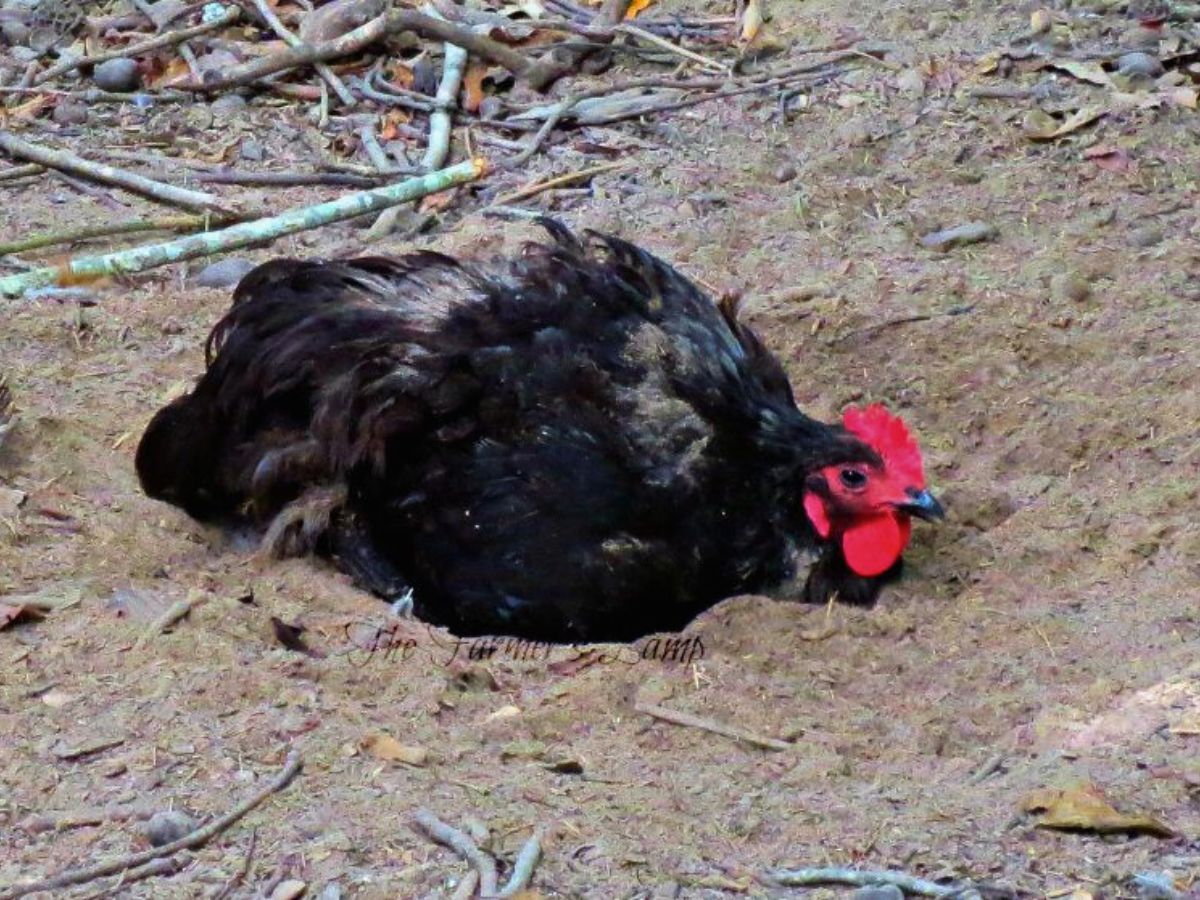
For Mite Control
We also use it for mite and parasite control for the chickens by adding it to their dusting spots, nests, and roosts. Dusting spots are where chickens naturally clean themselves by taking dust baths, which helps to keep their feathers and skin healthy.
By adding DE to these places, we create an environment hostile to mites and other parasites. This practice helps kill existing mites and prevent new infestations, ensuring that our flock stays healthy and comfortable. Regular use in these areas is key to effective mite control.
Caution for DE Use
Be sure to use caution when you are putting out DE. It is very fine dust and can be easily inhaled, causing eye, throat, and lung irritation. You may want to wear a mask, goggles, and gloves. I tie a large handkerchief around my nose and mouth. Be sure you are only using food-grade DE around people and animals!
Check Out Our Poultry Guides For Happy, Healthy Flocks
5. Dairy Products for Extra Protein
Yes, I know; someone in the group is always shocked whenever I share this in a talk or casual conversation. But it’s true—chickens love milk, yogurt, ice cream, and almost any dairy product.
If you have milk, yogurt, or ice cream going bad or just want to give them a treat, you won’t believe how they gobble it up. Almost like pigs!
Of course, we are organic and non-GMO here. We use raw, grass-fed A2A2 milk from our cows and milk products like yogurt from local sources who practice farming the way we do. If this is not part of your farm philosophy or goal, then use what you prefer. My girls love yogurt the most—it’s their favorite!
Just remember, while dairy can be a fun treat, it should be given in moderation to avoid digestive issues. Keeping a balanced diet is key to maintaining a healthy and happy flock.
6. Mealworms
We grow mealworms for our chickens. They are a supplemental food source, not a sole food source for chickens. We usually use Black Soldier Fly larvae because they are cheaper and we think easier to produce.
You can learn how to grow mealworms as a cheap food source for your chickens in our companion article. This will help lower your feed bill, and your flocks will love it!
Which Chicken Feed I Recommend And Why
As you know, we’re non-GMO, organic based homesteaders. In 2010, we began learning about GMOs (Genetically Modified Organisms) and immediately began the process of removing them from our home. We immediately saw improvements in health and well-being.
Then we thought, “We are what our animals eat. So if they eat GMOs, then we’re still eating GMOs…” We immediately began searching for an option for our usual chicken feed because we were still using laying feed at that time.
After several weeks of research, we found we could identify with Scratch and Peck Feeds‘ principles and philosophy. Our local feed store didn’t stock it, but they were willing to order it to see if there was a market for it.
It turns out we weren’t the only ones looking for it. They found a market for it. They told me they had customers who drive for three hours and load up their pickup truck beds with it. So, if your local feed store doesn’t carry it, just ask them about it. You never know!
You can also purchase it on Scratch and Peck products on Amazon if you can’t get it locally.
About Fermenting Feed
Fermenting feed is not new. People have been doing it for a very long time.
Back when we were still using chicken feed, we noticed that the animals on the farm, both livestock and wildlife, were behaving in a way that indicated we would have a hard winter that year. As it got closer and we realized it was closing in, we decided to boost their immune systems by fermenting their feed. They loved it! They didn’t know they were getting a nutritional boost…or did they?
Here are some benefits of fermenting feed:
- Nutritional Boost: The feed is more nutritious as the nutrients are more readily available for their digestive systems. This is especially important in the winter when they need more nutrients to keep warm.
- Complete Consumption: It helps them eat all the feed, including the fine particles that often get missed. Many feeds have nutrients mixed in with these fine particles, and the fermenting process swells the grains and adheres the particles to the feed, ensuring nothing goes to waste.
Our companion article provides step-by-step instructions for fermenting feed and more in-depth information on why you should.


Chickens Do Not Require Grains
Contrary to what we may think, chickens do not need grains to live. What may be shocking to you is that they are omnivores! Meat and fat are part of their natural diet. Just watch them free-range and see what they go for first: mice, grasshoppers, crickets, and the like.
While offering them grain encourages rapid growth and abundant egg production, some chicken keepers don’t feed any grains at all and still have healthy, happy, productive birds. Ultimately, it comes down to what works best for you and your way of life.
Many people who feed grain offer their flock a wide variety of foods. You know I free-range, which really saves on feed and supplements. But what if you can’t free-range and you want to offer your birds a grain-free diet?
Here are some options for a grain-free diet:
- Meat and Protein Sources: Many who feed a grain-free diet offer their birds venison, beef, rabbit, worms, pork, etc.
- Personal Preference: I never feed my birds other birds—it just seems wrong to me, and cannibalism is different from being an omnivore. But hey, that’s just me.
- Compost Method: We feed our chickens using a rotating compost method, which provides a variety of nutrients. We allow them access to compost piles in different stages of readiness.
- We block access to those about to go into the gardens or orchards because fresh chicken manure can burn plants and their roots.
- Variety of Foods: Those who follow this way of caring for their birds also offer garden scraps, garden produce grown just the flocks, kitchen scraps, mealworms, and dairy products.
A note on safety: Be careful not to give your chickens avocado pits, as they contain persin, which is toxic to birds. I also avoid giving mine onions or citrus fruits because they don’t like them, but some people say their chickens enjoy citrus, so give it a try and see.
My oldest son still doesn’t like chickens too much. Since he was little, he has said that “chickens are like little velociraptors and they would eat me if they could.” Yes, if they were big enough, they probably would. Whew…scary thought.
You can learn more about what not to feed chickens by listening to our podcast on this topic using the link shared earlier in this post.
Wrap UP
Don’t stress about the many options available. Choose what’s best for you and your lifestyle.
If you’re just starting out, pick a feed you feel comfortable with and go from there. Whether you opt for commercial feeds, free-ranging, or a grain-free diet, remember that you can always adjust as you learn. That’s one of the greatest things about this way of life—you start out where you are and grow from there. Growth never stops on the farm or homestead, for your flocks, herds, or for you.
Chickens are resourceful. They have survived thousands of years with minimal intervention. As long as you provide their basic needs and don’t neglect their care, you won’t harm them overnight. They are hardy and adaptable creatures.
Experiment with different feeding methods, like fermenting feed or using compost, and observe what works best for your flock. Remember, there’s no one-size-fits-all solution, and that’s okay. Your chickens will thrive with your attentive care and observation.
As always, we’re here to help. Feel free to reach out with any questions or share your experiences. We’re all in this together, learning and growing every day.


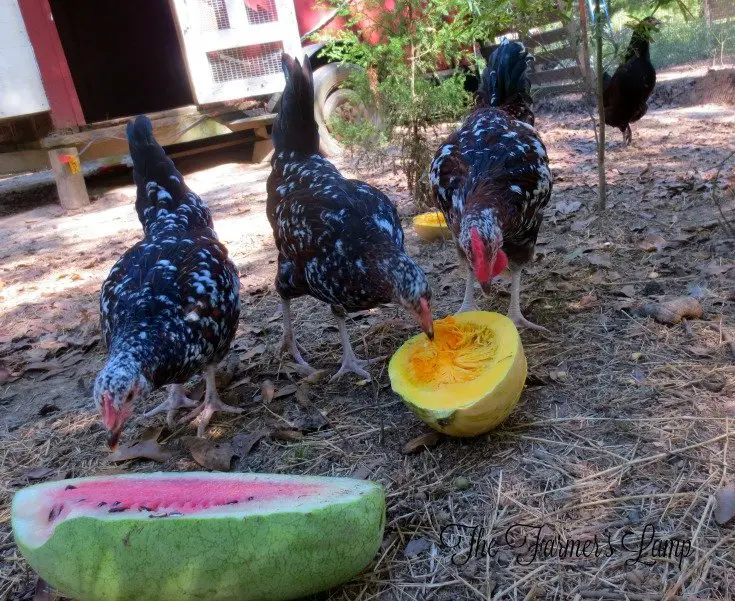
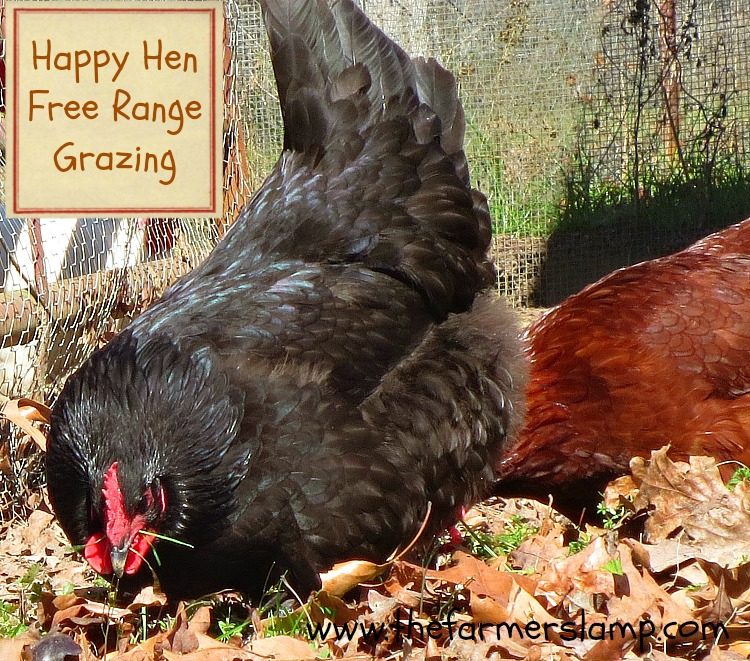
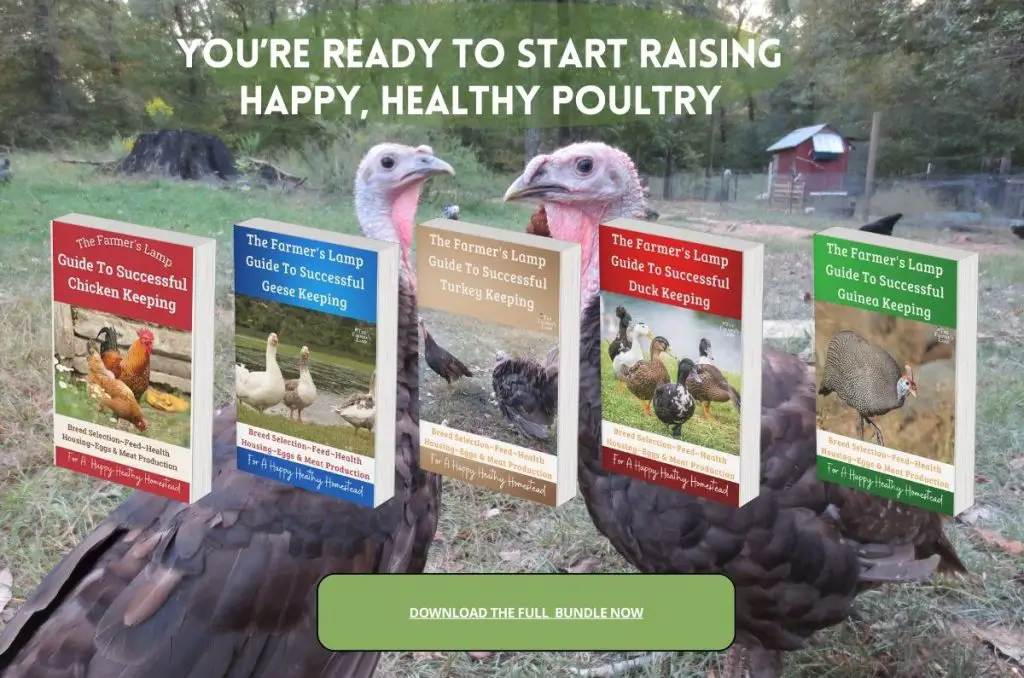


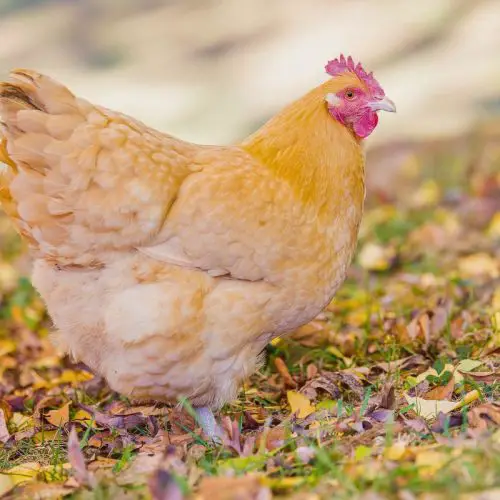
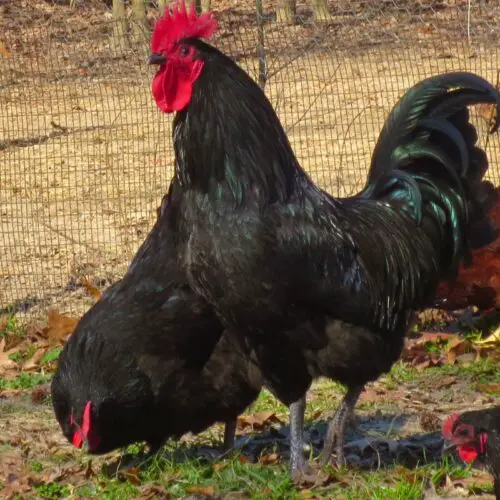
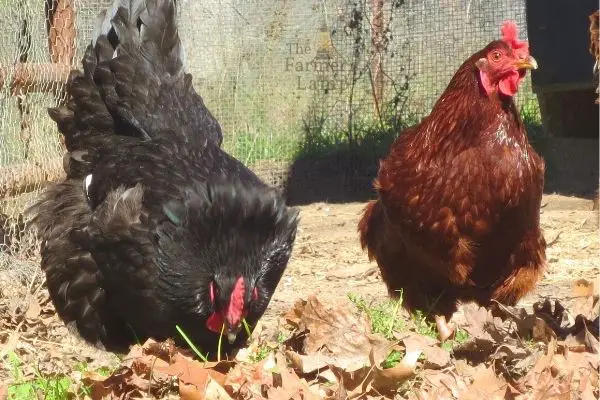
I tried to leave a message on your article on mealworms, but it would not work.
That is odd, thanks for letting me know. I will see if there is something wrong with the website.